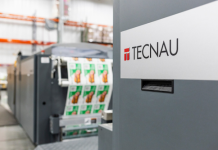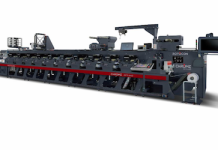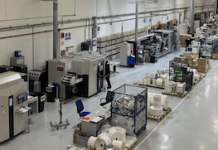The printing industry, like many sectors, is experiencing skills shortages, so the need for greater training to ensure the longevity of the industry is critical.
According to a drupa article, the print industry in Germany counts a total of 8700 trainees. But the training and skilled labour situation is placing increased pressure on this sector. Some 75% of the industry’s 7,000 companies state they are facing major challenges due to skilled labour shortages.
‘The print industry has been impacted by (skilled) labour shortages for years,’ said Heidelberger Druckmaschinen. According to a Heidelberg article recently published, nearly one in two companies lack suitable skilled staff. This challenge even ranks ahead of increased energy prices and bureaucratic burdens. For the study, the company conducted a representative poll of the views of 700 firms.
The Heidelberg-based company sees automation and digitalisation as solutions to the staff shortages in print shops. In this way jobs can be made more technical and more attractive for workers.
In South Africa, Printing SA has intensified its efforts to raise awareness and elevate the profile of the industry to the next generation of youth through a rigorous campaign centred around hosting Career Days in Gauteng, KwaZulu-Natal, and the Western Cape.
Each Chamber will host three career days in their province this year in partnership with member companies, exposing grade 12 learners to the plethora of career opportunities and career paths within the industry. ‘As the premier training institution for the sector in Africa, we pride ourselves on the quality of our courses, which are accredited by the FP&M SETA and have gained acclaim in Europe, Australasia and South America,’ said Printing SA’s Head of Marketing and Business Development, Abisha Katerere.
‘In partnership with the Department of Women, Youth and Persons with disabilities we have entered into an MOU, which will see the department endorse these initiatives and ensure that we reach as many of their constituents within the regions as possible. The career days include plant tours that aim to give learners real-time exposure to the manufacturing of printing, packaging, branding and design.
‘As the continent’s FESPA Association, we represent Printing SA members on the FESPA Youth Engagement Forum and we are bringing ideas and best practice gained from this platform to enable us to be more effective in how we entice the youth to pursue this industry as a viable alternative to traditional mainstream sectors. We aim to introduce more than 500 learners to the printing, packaging, signage and visual communications industry in 2024.’
Training Offering
Printing SA has more than 74 courses that range from Introductory, Technical and Skills programmes, to Administration training designed to address the skills needs of the industry. These courses address both the theoretical and practical components of various trades and occupations, and those who wish to be qualified as artisans in the industry have an opportunity to study and gain their qualification through Printing SA.
They are currently developing the new qualifications in alignment with the Occupational Qualification Framework endorsed by the Department of Higher Education and Training, and driven by the QCTO. This is aligned to driving new generation skills development, targeted at trades and occupational which are cutting edge to the evolving world of print and packaging.
‘Our training is offered through a multi-modal approach using e-learning, online, and face-to-face platforms at our regional training centres in Johannesburg, Durban and Cape Town. We have partnered with the Institute of Media, Strategy and Design (iMSD) to offer the Adobe Creative Cloud Suite Course for graphic design to the industry over the past two years, and we continue to invite and search for more partners that can assist us to add value to our training offering,’ said Katerere.
Establishing The Training Requirements Of The Industry
Printing SA have identified a number of areas that require a collaborative approach with the industry. As such, they will be constituting a Training Council comprising of members (industry stakeholders) and Printing SA to establish the training requirements of the industry. ‘We are confident that this inclusive approach will ensure that the development of relevant training course will provide an offering that will bridge the gap in many respects,’ said Katerere.
A profound challenge is the lack of skills available to the industry and the availability of training interventions to address the skills deficit. This is not a unique local issue, but part of a global concern. ‘Printing SA is one of the few associations globally that is working with schools, industry, and the FP&M SETA to bridge this gap and ensure that a talent pool is available to the industry. Printing SA is also reviewing its long-term outlook for training, which will look into a more dynamic distribution channel to offer its training programmes,’ he added.
How can Printing SA’s members assist with the skills shortage and training?
‘We encourage members to volunteer to be on the training committee and we are always looking for member companies that are willing to host unemployed learners who undergo our Foundational Learning Programme (FLP) and Introduction to Printing and Packaging courses to serve their workplace experiential learning with them,’ said Katerere.
‘We will also be training unemployed delegates on the various trades and occupations widely used by the industry, and these learners will need a place to undertake their practical training and assessments. Companies should be excited to host these learners by adopting a long-term view. This will enable us to provide an avenue for young job seekers to gain practical skills and further their knowledge of the craft.’
‘We have a long list of members that have been supportive of our efforts. The majority of our learners come from member companies and others have opened their doors to unemployed people in order to upskill them with practical skills. Of our entire membership base, more than 90% of them use our training interventions for their staff and have also been known to host unemployed people seeking opportunities within the industry.’
What will attract future generations to the printing industry in South Africa?
‘The advancements with technology have opened up a side of the industry that is not as traditional as it was five years ago. The industry is now looking for innovators, creatives, forward thinkers and skillsets that go beyond the need for merely understanding how to operate a printing or packaging press.’
‘This means that the opportunities are without bounds, and the need for a person who understands the brand’s objectives well enough to translate it into a product that compliments their vision is going to be the ideal candidate to offer added value to the industry. Artificial Intelligence, Radio Frequency Identification (RFID), Near Field Communication (NFC), Augmented Reality and Virtual Reality, among others, have all become transitionary enablers for value add in our sector, and we are looking forward to being contributors to the transformation of this incredible industry.’
‘Lastly, there is a dire need to change the perception of this industry and also profile the industry in a way that attracts the youth. Globally, this industry is viewed with a pronounced traditional layer, which is distant from the reality. Having recently visited drupa, it is evident how dynamic this industry is. As such, Printing SA, together with its members, will assiduously seek to find creative ways to profile the industry in its dynamism, with the aim of crafting the sustainability of the industry,’ concluded Katerere.
PRINTING SA
+27 11 287 1160
info@printingsa.org
www.printingsa.org






















